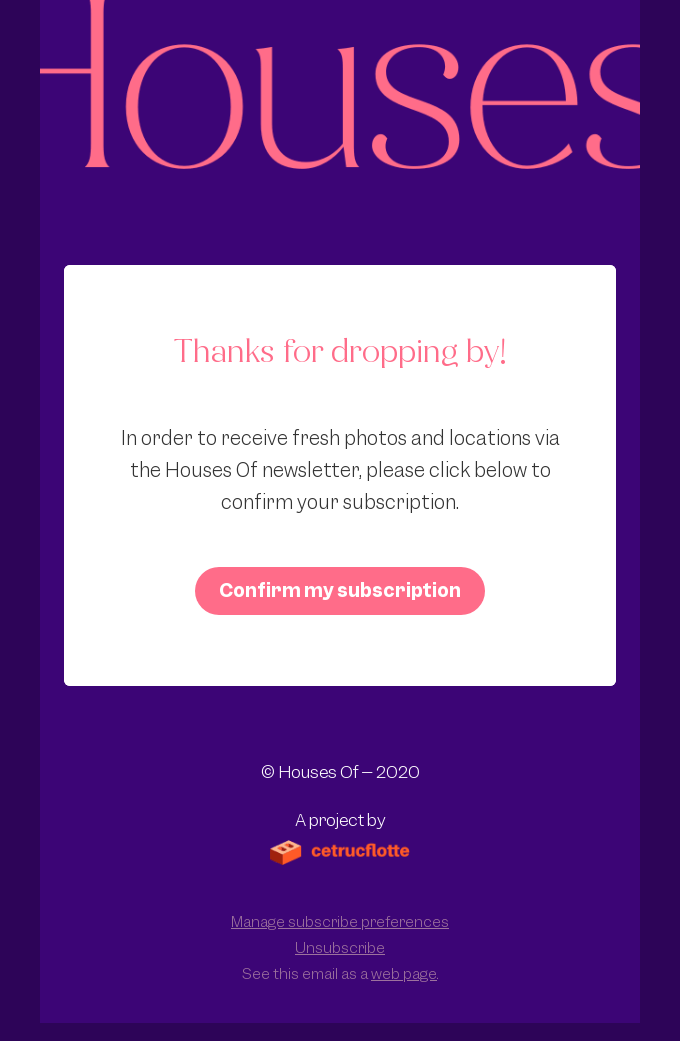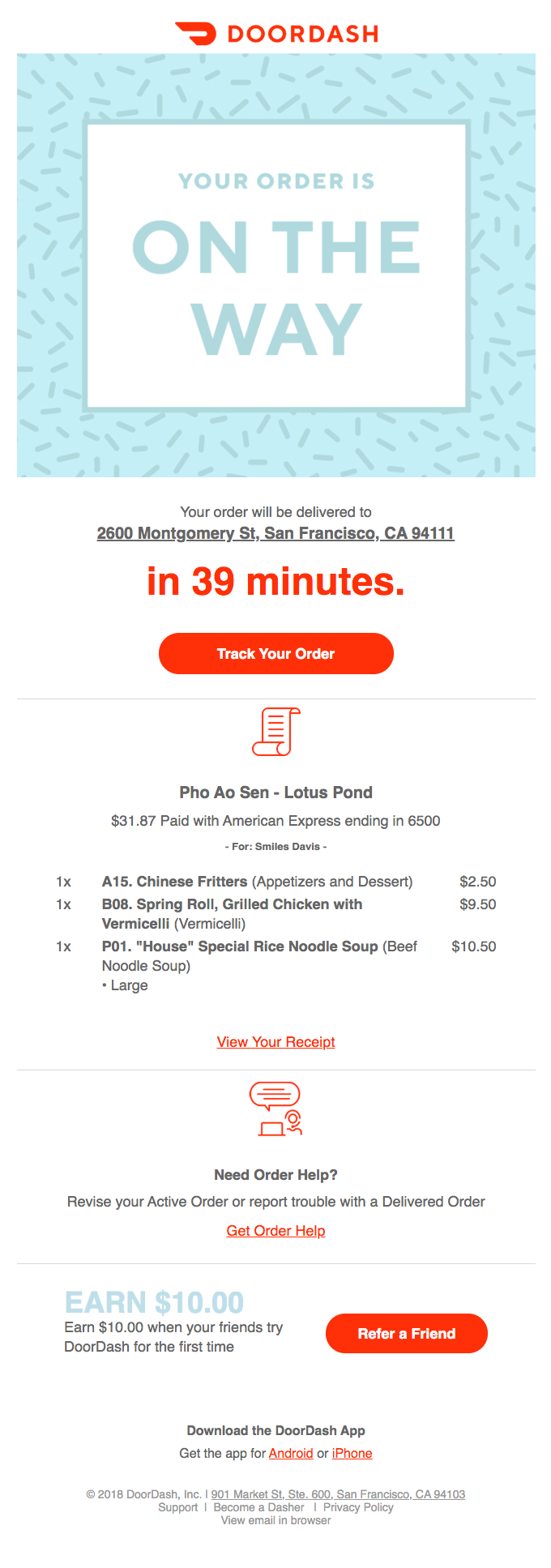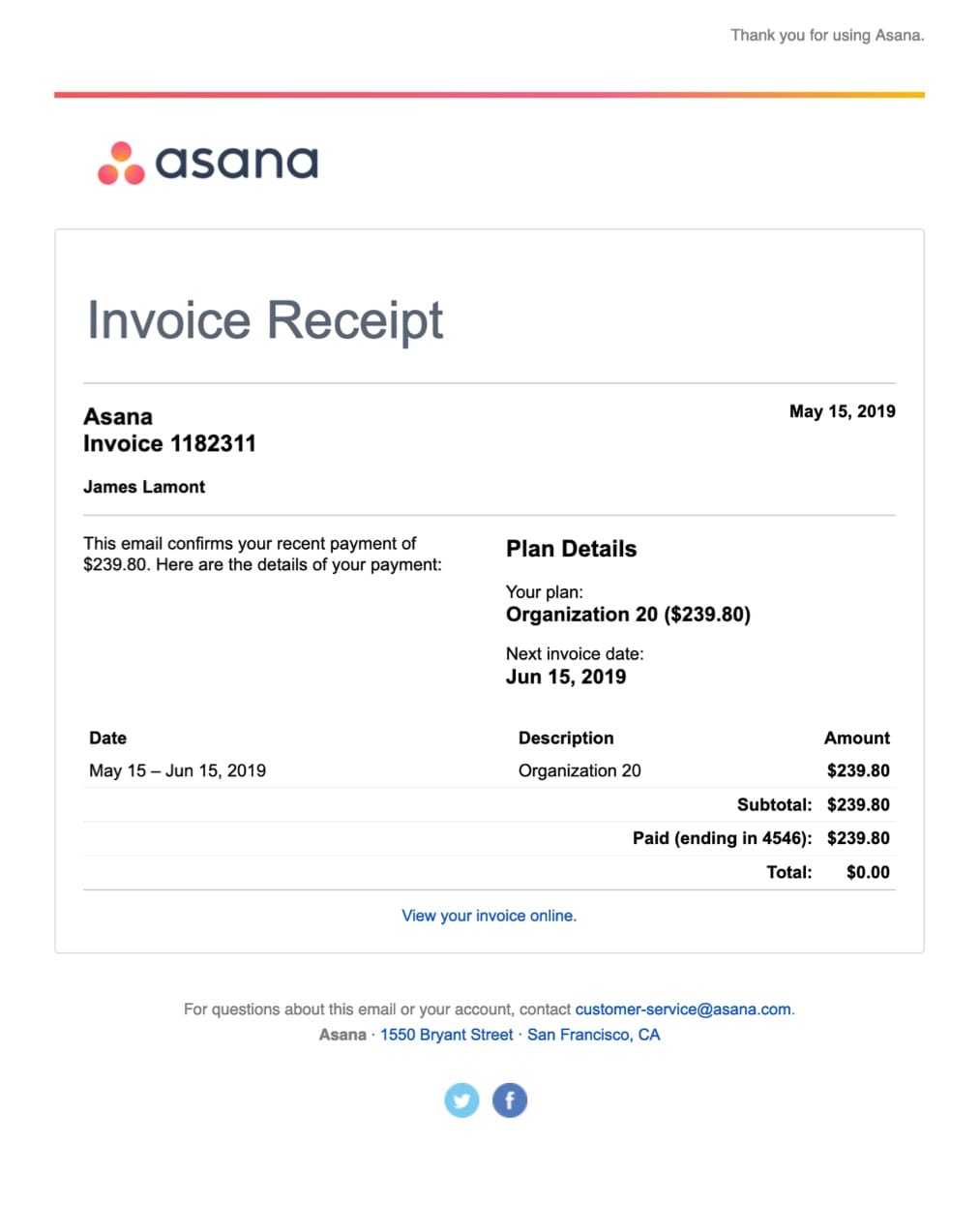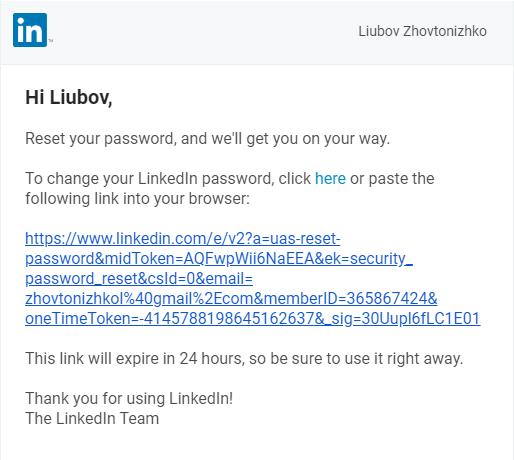Transactional Emails 101: Types, Examples and Best Practices
In this guide, you will learn the types of transactional emails, inspiring examples, and the best practices you can leverage to deliver a valuable transactional email.

Transactional emails are more important than other forms of marketing emails. Companies that apply best practices when sending transactional emails end up receiving positive results for their efforts. If you observe closely how your audience engages with your transactional emails, you can figure out ways to provide more value than your competitors.
In this article, you'll learn the various types of transactional emails, some great examples, and the best practices you can apply to create valuable transactional emails for your customers.
Table of Content
- What is a Transactional Email?
- Why You Should Send Transactional Emails.
- Difference Between Transactional Emails and Marketing Emails.
- Types of Transactional Emails.
- Transactional Emails Best Practices.
- Getting Started on Transactional Emails.
What is a Transactional Email?
A transactional email is an automated message sent to a recipient after a specific event or action on a website or app. The message is sent to facilitate a transaction or confirm a particular action taken by the recipient. For this reason, transactional emails have high engagement rates because customers usually expect to receive these emails.
Transactional emails are not the same as marketing emails as the messages are strictly triggered by actions, events instead of marketing promotional campaigns. Companies use transactional emails to communicate important messages to customers during critical moments of their lifecycle.
Why You Should Send Transactional Emails
What do you think will happen If a customer carries out a purchase on your website and doesn't get an order confirmation email or receipt from you? They'll most likely be in a state of worry, and you could risk losing them for good. Transactional emails reduce the chances of ruining your communication with your customers.
Instead, they provide the opportunity to instantly connect and communicate vital information to your customers during critical moments in their buying journey. Besides, excellent customer service is dependent on good communication.
Difference Between Transactional Emails and Marketing Emails
You may think that transactional emails are the same as marketing emails. The truth is that they are not the same. Transactional emails are strictly sent to communicate valuable information based on the customer's needs - the performed action taken by the customer on a company's website or app.
On the other hand, marketing emails serve to promote products, services, informational content, and company updates. While marketing emails help grow your business revenue and brand, they are not directly in control of how your business or website performs.
Types of Transactional Emails
Now that you've learned what a transactional email is, let's move on to the different types of transactional emails. Transactional emails are of different types. However, no matter the type, one thing remains constant-they serve to communicate important information that your customers need to move forward with an action or event on your website.
Here are seven types of transactional emails to give you a better idea:
1. Email subscription confirmation
This type of transactional email is sent after a user signs up for a new account with your brand. The purpose of this email is to confirm a new user's email address. You can use this type of email after a user signs up for your newsletter.
For example, Houses makes its subscription confirmation email simple and detailed for its users. The email includes a link for the user to confirm their subscription. All the user needs to do is click the link and start receiving brand-related information.

The line between email subscription confirmation and welcome email tends to get blurry. However, note that an email subscription confirmation email is not the same as a welcome email that serves a marketing purpose.
2. Order confirmation email
If you made an order online and didn't get a message confirming your order, you'll most likely wonder what went wrong. But with an order confirmation email, you can leave your user from a worried state to a more relaxed state.
Order confirmation emails serve the following purposes :
- Reassure the customer that the order was successful.
- Include all the necessary items that the customer purchased
- Provides the order information such as tracking number, order address, customer service contact.
- Provide the expected time and day of delivery.
- It provides a receipt for the customer's purchase.
Doordash provides a great example of an order confirmation email. Clearly stating the right expectations, the email includes a specific time when the customer would receive their order. It also includes a detailed list of the purchased items to confirm that the orders were accurate.

It wouldn't be a great idea to leave your customers worried about an order they made on your website or mobile app. So leverage the power of order confirmation emails to alleviate any customers' concerns by confirming their order, including the pricing details and purchased items, which helps the customer feel more at ease with their order.
Read our insightful post on best practices for order confirmation emails and 20 powerful examples.
3. Invoice emails
An invoice email notifies a customer when a payment is due. An invoice email serves the following purposes:
- It reminds the customer that a payment is due.
- It includes details of the payment such as invoice date, the total amount to be paid, and the description.
Asana provides a detailed example of an invoice email. The email includes an invoice number, invoice details, and the total amount due.

Sometimes, your customer may not remember that a payment is due, so you can use an invoice email as an opportunity to set clear expectations for the customer.
4. Delivery confirmation emails
This type of transactional email provides a great way to build anticipation and excitement for a customer's recent purchase. Since a customer would already be expecting the message, customers usually receive these emails with satisfaction.
It ensures that the purchased product gets to the customer's hands. The email normally includes:
- The contact details of the delivery person's name and phone number.
- Order information
- Delivery information such as customer address details.
If the customer receives a delivery confirmation email but doesn't receive any package, they'll have to contact the company's customer support staff.
5. Shipping notification email
Shipping notification emails inform customers that their order is on the way. This way, customers can be at ease knowing that they will receive their order soon. The email includes:
- A piece of tracking information with a link for customers to track their purchase to know when to expect their purchase.
- Information on the next steps customers can take so they are not left wondering how to move forward with their purchase.
- Purchased product quantity confirming what the customer has ordered.
United by blue, a clothing brand delivers a detailed shipping notification email. The email includes an estimated delivery date, purchased items, order number, and a link to track purchased products. So, the customer can easily keep track of their items.

6. Password reset
A password reset option is an option that helps an anxious customer that has forgotten their login details.
A customer could get locked out of a mobile app or website. But with the password reset option, the customer can click "forgot my password," then the site automatically sends a password reset link.
The customer can quickly create a new password and gain access to the website or mobile app.
Linkedin provides a great example of a password reset email. As you can see, the email is personalized, stating the user's name at the beginning of the message, followed by a visible link for the user to reset their password. Also, note that the company also indicated how long the link is valid (24 hours) so the user can act quickly without delay.

Transactional Emails Best Practices
Transactional emails are a great opportunity to build a great relationship with your customers, which is a chance to let your customers know that you value their interest in your business and treat them with the highest priority. That said, there are some practices you need to incorporate into your transactional emails for optimum performance.
Here are nine best practices for transactional emails:
1. Separate your transactional emails from your marketing emails
Transactional and marketing emails serve different purposes, so it wouldn't be great to mix them up when sending messages to your customers. You don't want your transactional emails to have poor performance because of the low engagement rates from your marketing emails.
You need to target the right day and time to send your transactional emails for optimum results, which means you need to choose an automation solution that enables you to separate the routing of your transactional emails from your marketing emails. This way, your customers will engage more with your emails.
2. Design your transactional emails with rich brand colors and visuals
If your transactional emails are bland with few or no visuals, then it may be unengaging. An email designed with visually appealing images and clear brand colors would be more engaging than an email with just written words.
Just a splash of your brand color and company logo can make a big impact on your marketing ROI.
3. Include an appropriate and compelling subject line
Make your emails stand out by including clear and appropriate subject lines that clearly describe what your customers should expect in your message. This way, users can receive the email knowing the reason they are receiving it. Besides, a compelling subject line would result in more open rates.
4. Incorporate dynamic personalization in your emails
Your customer would feel valued and appreciated if you specifically addressed them in the email. Personalization like a customer's name, purchase, or order details can make a big difference in how your customers react to your emails.
5. Increase your email engagement by including social media links
Transactional emails don't have to be limited to confirming an action or purchase on a website. You can also use the opportunity to invite your customers to engage further with your brand. Most times, recipients may not be ready to engage further at the moment they receive your message, but if you leave the door open to more engagement, they may become one of your social media fans in the future and easily receive upcoming events and announcements.
6. Ensure you use responsive email templates
How do you ensure that your customers consume your message most effectively? The answer to this question lies in the templates you use in your emails. You need to use a responsive design for your email templates to be easy to navigate, which would make your emails look good on mobile devices. As a result, your readers will be able to interact better with your emails.
7. Enable recipients to manage email preferences
Transactional emails serve important purposes, but what if your recipients do not want to receive every single notification? In a situation whereby a customer engages in a shopping spree, order information and shopping cart details would most likely fill their inbox.
You can use the opportunity to offer your recipients a chance to manage email preferences and unsubscribe. All you need to do is add a link that will redirect recipients to a webpage where they can choose to opt-out of emails completely. This way, they don't have to deal with unwanted emails and a cluttered inbox.
8. Track your email activity regularly
Your transactional emails may not always land in the inbox. Your emails could land in your recipient's spam or junk folder, but you can only find out by tracking your email activity regularly. Leverage real-time data analytics tools to monitor key metrics.
This way, you can learn what works and doesn't work. When you reduce email bounces, it improves your deliverability, boosts the value of your contact lists, and builds your brand reputation.
Engage helps you track your transactional email analytics and events. See what mail and recipient opened, clicked, failed, or bounced.
9. Choose a reputable email service provider
The email service provider you choose can make a big difference in the overall performance of your transactional emails. A bad one could mean poor email performance. Ensure you choose an email service provider that will give you the tools to create valuable transactional emails that your customers would engage with.
Your chosen email service provider should use a powerful sending infrastructure that provides the flexibility of sending as many emails as necessary. Example service providers include Mailgun, Postmark, Amazon SES, and Sendgrid.
Additional ways to leverage transactional emails
As you've learned from the explanation above, transactional emails serve the purpose of delivering important information to customers at critical moments during the buying process. However, you can still leverage transactional emails for other marketing-related messages. Here are some ways you can get started:
Additional information and added value
Transactional emails don't need to be strictly transactional. There are other ways you can make your emails more engaging and fun. For example, you can include discount offers, coupon codes, referral bonuses, or even additional resources.
Cross-selling and upselling
With this strategy, you can significantly increase your online sales. For example, you can suggest similar items to what your customers purchased. Suggesting related products could encourage customers to engage further with your products. With a call-to-action for your product or service, you can highlight the message at the time your email is being sent.
Getting Started on Transactional Emails
This brings us to the end of this exhaustive piece. Hope this guide has helped you learn the importance of transactional emails and the great benefits to your business.
Let's go through a brief recap:
- Transactional emails are strictly made to deliver valuable information to customers during key phases in the customer buying journey.
- Include appropriate subject lines for more open rates.
- Incorporate your brand personality and colors for increased engagement.
You now have the opportunity to begin leveraging transactional emails to build a great relationship with your customers, but this can not be possible without the right marketing solution.
The right solution will make it easy for you to create transactional emails, automate them, and keep track of your email campaigns. Engage does this and more.
With Engage, you can:
- Track how customers interact with your product, app, or platform.
- Use that data to create unique customer segments.
- Send personalized messages via Email, SMS, Push Notifications, and Web In-app messages
- Create automated messaging workflows to power your email marketing campaigns.